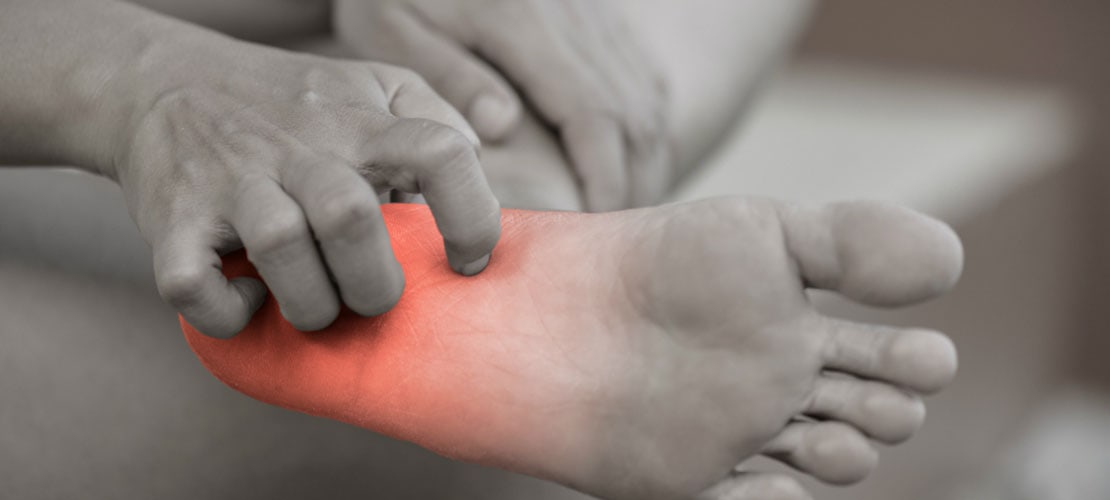Plantar Fasciitis refers to the condition of pain and/or tissue damage that occurs at the attachment of the plantar fascia to the underside of the calcaneus (heel bone).
A band of connective tissue runs from the heel to the ball at the bottom of the foot, called the plantar fascia. Maintaining the bones and joints in position and enabling us to push off from the ground are two of its main functions. Inflammation and heel pain can be caused by bruising or overstretching this ligament. Plantar fasciitis is often accompanied by heel spurs.
Symptoms and Causes
There are many risk factors that increase the likelihood of a person suffering from Plantar Fasciitis. These include age, level and frequency of aerobic exercise, poor foot mechanics, obesity and certain occupations.
Pain is usually felt underneath the heel. Most people experience sharp pain on the bottom of the heel that may feel like a sharp object sticking into the foot. This may also be accompanied by mild swelling in the heel. The pain will be most intense at the start of the day or after a long period of rest. The heel may also hurt before and after exercise but not during.

Treatment
Plantar Fasciitis can typically be diagnosed with just a physical exam but after your doctor has checked the arches of your feet they may also refer you for an ultrasound or x-ray to rule out any other possible conditions that may be causing the pain.
Treatment options can vary depending on the severity of the plantar fasciitis but typically the first step is to manage the pain with pain relief medication like ibuprofen or paracetamol and make sure the affected foot gets rested. Continued pressure from walking can worsen the symptoms of plantar fasciitis.
An icepack applied four times daily for between 10 and 20 minutes at a time can also greatly decrease pain and inflammation. Our team of experienced podiatrists may also recommend physiotherapy or certain stretching exercises to stretch out the Achilles tendon and plantar fascia. This may involve stretching and strengthening the calf muscles to help reduce inflammation and the chance of it returning.
Night splints may also be recommended and fitted to the calf and foot to wear during sleep. These splints will hold the plantar fascia and Achilles tendon in an extended position to assist with stretching and reduce pain.
Your podiatrist will likely recommend and fit you for orthotics as well as giving you recommendations on shoes with adequate support. The orthotics will provide support to the arches of the feet and help to distribute pressure more evenly, stimulating the small muscles of the foot and providing relief from plantar fasciitis.
For more persistent cases surgery may be recommended or a corticosteroid injection into the attachment point of the plantar fascia to reduce inflammation and provide immediate relief. For athletes, your podiatrist will provide you with a list of strategies for reducing pain and inflammation as well as a targeted plan to ease back into strenuous physical activity.
If you have gotten to the end of this article and think you may be suffering from Plantar Fasciitis contact the team of dedicated, experienced podiatrists at Grace Podiatry! If travel is an issue we are a mobile service and we can come directly to your residence to examine you and provide treatment.








